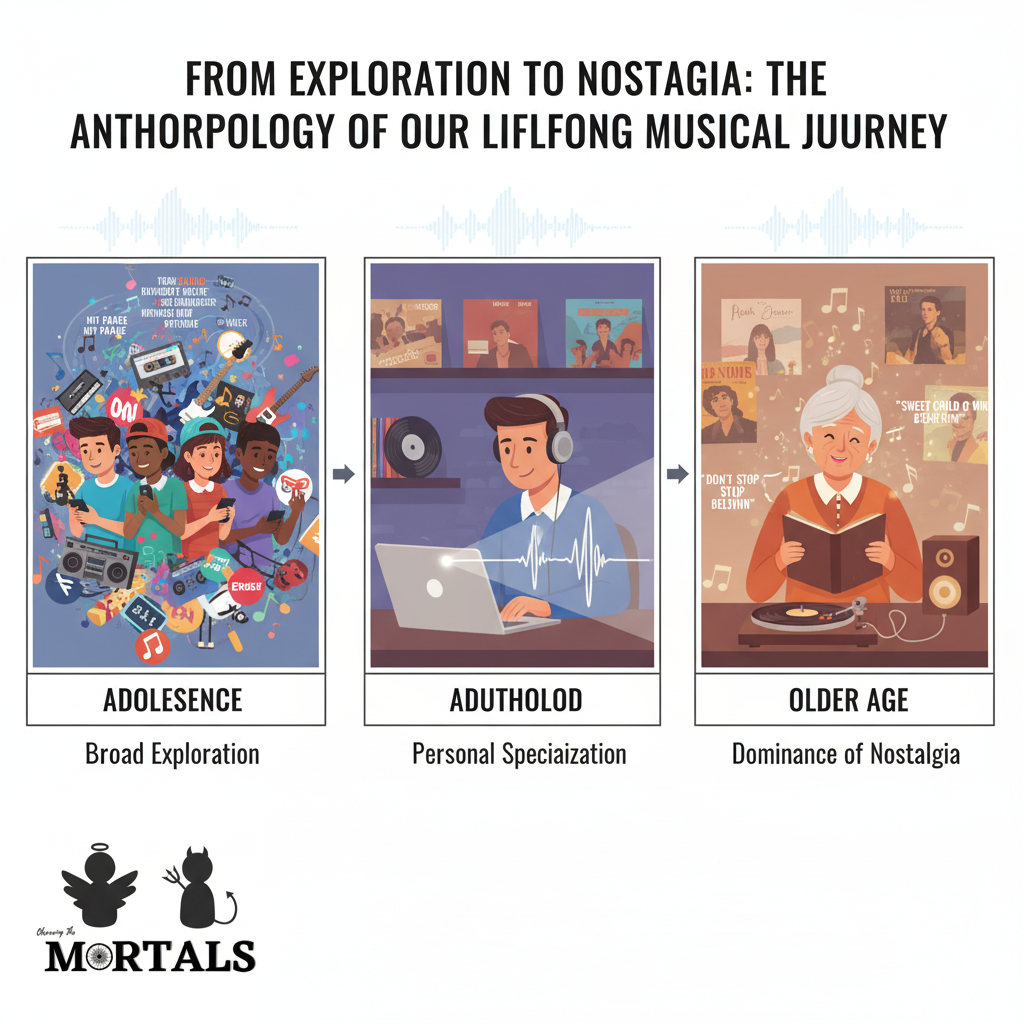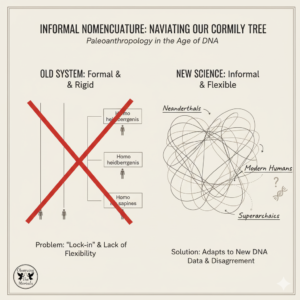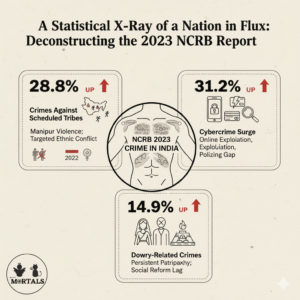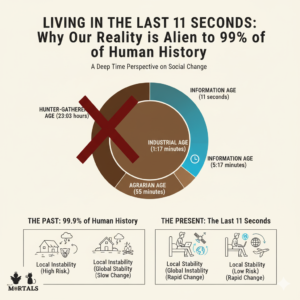Think back to the music you loved as a teenager—the songs that defined your friendships, your heartbreaks, and your sense of self. Do you still listen to them? And how does that music compare to what you listen to today? For the first time, a massive new study has provided scientific evidence that maps this deeply personal journey. By analyzing 15 years of streaming data from over 40,000 people, researchers have revealed a predictable and profoundly human pattern in how our musical identity evolves, from the broad, trend-driven exploration of youth to the warm, nostalgic embrace of our later years.
The Information Box
Syllabus Connection:
- Paper 1: Chapter 1.7 (Digital Anthropology), Chapter 2.5 (Socialization & Life Course), Chapter 2.1 (Culture & Identity), Chapter 1.8 (Research Methods: Quantitative)
Key Concepts/Tags:
- Digital Anthropology, Life Course, Music, Nostalgia, Identity, Big Data, Last.fm
The Setting: Who, What, Where?
This case study is based on a large-scale, longitudinal study by an international team of researchers. Their laboratory was not a physical space, but the vast digital archives of the music service Last.fm. They analyzed an anonymized dataset covering 40,000 users over a 15-year period, encompassing over 542 million song plays. This “Big Data” approach allowed them to track the evolution of music preferences and listening habits as people age, from adolescence to older adulthood, on a scale never before possible.
The Core Argument: Why This Study Matters
This study provides the first large-scale, data-driven confirmation of how our relationship with music changes across our lives, revealing a clear three-stage trajectory.
- Youth = Broad Exploration: In adolescence and early adulthood, listening habits are “expansive.” Young users explore a wide range of contemporary, popular, and trendy music. Their taste is broad, varied, and heavily influenced by popular culture and their peer group. It is a period of musical discovery and social belonging.
- Adulthood = Personal Specialization: As people move into adulthood, this spectrum begins to narrow. They start to settle into specific genres and artists that they identify with more personally. The influence of charts and trends wanes, replaced by a more established and individualized musical taste.
- Older Age = Dominance of Nostalgia: In middle age and beyond, nostalgia becomes a powerful, dominant force. Listeners repeatedly return to the music of their youth—the songs from their teens and twenties. This music becomes the “soundtrack of our lives,” a powerful anchor for memory and emotion. While they may still engage with new music, the pull of the past becomes a defining feature of their listening habits.
The Anthropologist’s Gaze: A Critical Perspective
- Digital Anthropology and “Big Data”: This study is a prime example of digital anthropology in action. It shows how anthropologists and social scientists can now use massive, passively collected digital datasets to study human behavior at a scale that was previously unimaginable. This is a major methodological shift from traditional, small-scale, qualitative ethnography, offering a new way to identify broad cultural patterns.
- The Anthropology of the Life Course: The study is a classic application of the anthropology of the life course. It demonstrates that cultural consumption (in this case, music) is not static but is deeply tied to our journey through different stages of life—adolescence, adulthood, and old age. Each stage has its own social and psychological priorities, and our taste in music reflects this, moving from a tool for social identity to one for personal memory.
- Is the Algorithm the Architect?: A critical anthropological question would be: to what extent is this pattern a “natural” aging process, and to what extent is it being shaped by the very recommendation algorithms of platforms like Spotify? Do we listen to more nostalgic music as we get older because we naturally want to, or because the algorithm learns we have an affinity for it and then feeds us a constant stream of “throwback” playlists, creating a powerful feedback loop?
- Limitations of the Data: An anthropologist would be mindful of the data’s limitations. The study uses data from Last.fm users, who are a self-selecting group of tech-savvy individuals willing to share their listening habits. They may not be representative of the entire population. Furthermore, the data can only show what was played, not the context or why—was it active, emotional listening, or just background music at a party?
The Exam Angle: How to Use This in Your Mains Answer
- Types of Questions Where It can be used:
- “Discuss the impact of digital technology on the study of culture and society.”
- “How does culture shape identity across the different stages of the human life course?”
- “Analyze the role of new quantitative methods in anthropological research.”
- Model Integration:
- On Digital Anthropology: “Digital anthropology is leveraging ‘Big Data’ to analyze cultural patterns at an unprecedented scale. For example, a recent study of 40,000 Last.fm users over 15 years provided quantitative evidence for how musical taste evolves across the life course, moving from broad exploration in youth to nostalgia-driven listening in older age.”
- On the Life Course: “Cultural consumption is deeply tied to the human life course, reflecting our changing social needs. A large-scale study on music streaming habits has shown a clear pattern: adolescents use music for social identity and exploration, while older adults use it as a powerful tool for personal memory and nostalgia.”
- For GS-1/Essay (Technology & Society): “The digital footprints we leave are becoming a powerful resource for understanding human behavior. A recent analysis of 15 years of music streaming data, for instance, has scientifically mapped how our cultural tastes change as we age, offering valuable insights for both psychology and the future of personalized technologies like recommendation engines.”
Observer’s Take
This study is fascinating because it takes a deeply personal and subjective experience—our love for music—and reveals a universal, predictable human pattern within it. It’s a scientific confirmation of something we all intuitively feel: that the songs we listen to in our youth become woven into the very fabric of our being, serving as a powerful soundtrack to our memories. It’s a powerful reminder that while technology, trends, and even our own tastes may change, the fundamental human need to use culture to build our identity, to connect with our peers, and, eventually, to remember who we once were, remains a constant and beautiful part of our shared journey through life.
Source
- Title: Soundtracks of Our Lives: How Age Influences Musical Preferences
- Author: Alan Said, et al.
- Publication: Adjunct Proceedings of the 33rd ACM Conference on User Modeling, Adaptation and Personalization
- News Source: University of Gothenburg / Neuroscience News
- Link: https://neurosciencenews.com/music-mood-feeling-aging-29769/





